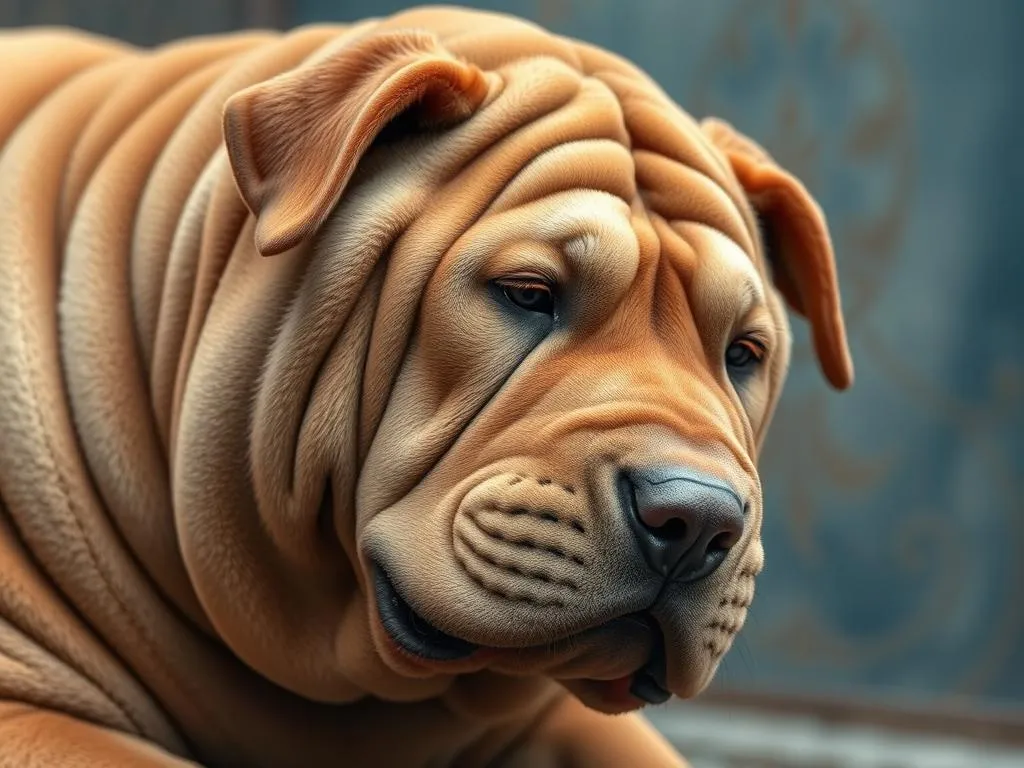
The Chinese Shar Pei is a truly unique breed, known for its distinctive appearance and intriguing history. With their signature wrinkled skin and hippo-like face, these dogs have captured the hearts of many pet lovers around the world. Understanding the characteristics, health, and needs of the Chinese Shar Pei is essential for anyone considering bringing one into their home.
History and Origin of the Chinese Shar Pei
Ancient Roots
The Chinese Shar Pei has ancient origins that trace back thousands of years to China. Initially bred for various purposes, these dogs were utilized as guardians and hunting companions. Their loose skin was not merely for aesthetics; it served a practical purpose during dog fights, allowing them to withstand bites from other dogs. In fact, the breed’s name translates to “sand skin,” referring to the unique texture of their coat that offered both protection and camouflage in the rugged terrains of China.
Recognition and Development
The Chinese Shar Pei was officially recognized by international kennel clubs in the late 20th century, particularly by the American Kennel Club in 1992. However, the breed faced significant challenges, including dwindling numbers during the late 20th century due to political and economic changes in China. Fortunately, dedicated breeders worked to revive the breed, focusing on health and temperament to ensure the Chinese Shar Pei could thrive as a companion animal in modern households.
Physical Characteristics
Appearance
The Chinese Shar Pei is easily recognizable due to its signature features. They possess deep wrinkles throughout their bodies, especially on the face, which give them a unique, almost comical look. Adult Shar Peis typically stand between 18 to 20 inches tall and weigh anywhere from 45 to 60 pounds, making them a medium-sized breed. Their broad, hippo-like face and tiny ears add to their distinctive charm.
Coat and Color
Shar Peis come with three coat types: the horse coat, brush coat, and the extremely rare bear coat. The horse coat is the shortest and most common, while the brush coat is slightly longer and softer. Common colors for the Chinese Shar Pei include black, blue, fawn, and cream, often with unique patterns such as brindle. Their coats require minimal grooming, but their wrinkles need special attention to prevent skin issues.
Temperament and Behavior
General Personality Traits
The Chinese Shar Pei is known for its loyal and protective nature. They are often reserved with strangers but form strong bonds with their families. This breed is intelligent and can be somewhat independent, which can sometimes lead to stubbornness. Early socialization is crucial to ensure they develop into well-rounded dogs that can comfortably interact with various people and pets.
Socialization Needs
Proper socialization is essential for the Chinese Shar Pei. Exposing them to different environments, people, and other animals during their formative months can help mitigate any potential fear or aggression. They tend to be good with children, but supervision is necessary, especially with younger kids, due to their size and strength.
Training Challenges
Training a Chinese Shar Pei can present challenges due to their independent nature. Consistent, positive reinforcement techniques work best. Patience and regular training sessions can help curb any behavioral issues. Common challenges may include stubbornness or a tendency to be territorial, so early obedience training is advisable.
Health Considerations
Common Health Issues
The Chinese Shar Pei can be prone to several genetic health issues, including skin problems, hip dysplasia, and eye conditions like entropion, where the eyelids roll inward. Regular check-ups with a veterinarian can help detect these issues early. Typically, a Chinese Shar Pei has a lifespan of 8 to 12 years, but this can vary based on genetics and overall care.
Regular Health Maintenance
Routine veterinary visits are vital for maintaining the health of a Chinese Shar Pei. Vaccinations, flea and tick prevention, and regular health screenings can help ensure your pet lives a long, healthy life. Additionally, owners should be vigilant about their Shar Pei’s skin and eye health, as these areas are particularly susceptible to issues.
Care and Maintenance
Grooming Requirements
Grooming the Chinese Shar Pei is relatively straightforward. Their short coats require minimal brushing; however, the wrinkles need special attention. Owners should clean the folds regularly with a damp cloth to prevent moisture and debris buildup, which can lead to skin infections.
Exercise Needs
The Chinese Shar Pei is a moderately active breed that requires daily exercise to stay healthy and happy. A minimum of 30 to 60 minutes of exercise each day, such as walks or playtime in a secure area, is recommended. They enjoy activities that stimulate their minds as well, such as puzzle toys or obedience training.
Diet and Nutrition
A well-balanced diet is crucial for the health of a Chinese Shar Pei. High-quality dog food, appropriate for their age, size, and energy level, is essential. Owners should monitor their dog’s weight closely, as Shar Peis can be prone to obesity. Regular feeding schedules and portion control can help maintain a healthy weight.
Living with a Chinese Shar Pei
Ideal Living Conditions
The Chinese Shar Pei adapts well to various living conditions, whether in an apartment or a house with a yard. However, they thrive in environments where they have room to move and play. A secure yard is ideal, as they can be territorial and may bark at passersby. Regular walks and mental stimulation are key to keeping them happy in smaller spaces.
Integrating into Family Life
Bringing a Chinese Shar Pei into your home requires understanding their unique needs. New owners should prepare their homes by creating a comfortable space for their Shar Pei, complete with a cozy bed and chew toys. Establishing a consistent routine for feeding, exercise, and training can help ease the transition for both the dog and the family.
Common Myths and Misconceptions
Despite their somewhat intimidating looks, the Chinese Shar Pei is often misunderstood. Many believe they are inherently aggressive; however, this is far from the truth. With proper socialization and training, they can be affectionate and gentle companions. Additionally, while they may appear to be hypoallergenic due to their short coats, no dog is entirely hypoallergenic, and those with allergies should consult with a veterinarian before bringing a Shar Pei into their home.
Conclusion
The Chinese Shar Pei is a fascinating breed with a rich history and unique characteristics. From their ancient origins in China to their distinct physical traits and loyal personalities, they make wonderful companions for the right owner. Understanding their needs regarding health, exercise, and socialization is vital for ensuring a happy life together. Owning a Chinese Shar Pei can be a rewarding experience, provided that potential owners are prepared for the responsibilities involved.
With their loyal disposition and unique charm, the Chinese Shar Pei can be a delightful addition to any family, provided they receive the care and attention they deserve. Responsible pet ownership is key to fostering a loving and healthy relationship with this remarkable breed.









